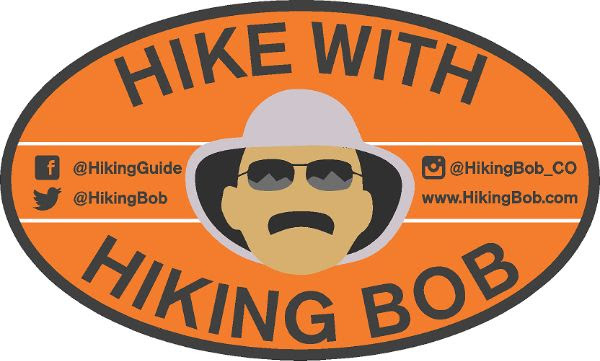TOSC Board Member and Family Doctor, Heather Mundy has some great news about the benefits of hiking…and biking!
Did you know that hiking is not only fun, but has proven health benefits? Hiking gets your heartrate up without the high impact effects of other activities (like running) and can reduce your risk of heart disease and lower blood pressure. Exercise also mimics effects of insulin production and can combat diabetes through stabilizing or lowering blood sugar and increasing the body’s sensitivity to insulin. So get out, enjoy some beautiful scenery, and reap those health rewards!
Feeling tired, gloomy or anxious? Try taking a hike! Hiking releases endorphins in the body, which can reduce symptoms of anxiety and depression. Also, getting that much needed Vitamin D from the sun can improve sleep by regulating the sleep-wake cycle. Finally, certain colors have different effects on our stress responses, with the green tones in nature producing a calming effect, which can decrease our body’s fight or flight response. Practicing mindfulness while hiking is another way to get a boost of happiness and grounding. Go at your own pace and try to notice the blue sky above you, the firm ground below you, the beautiful symphony of nature around you and the newfound peace within you.
Want to improve your balance, maintain strong muscles and bones and combat arthritis? Then hiking might be the activity for you! Hiking is considered a low impact activity, which puts less stress on joints than other activities, such as running. Movement can also decrease morning pain and stiffness in people already suffering from arthritis, and walking on an unsteady surface can improve balance over time. Hikers also get an added boost in bone density from hiking, especially if you wear a backpack or carry water. So grab those hiking essentials, strap on some comfy hiking shoes, and go build those strong muscles and bones!
Looking for a low impact activity that provides an opportunity to experience our local parks and trails? Cycling might be the perfect addition to your outdoor routine. Not only does riding a bicycle provide aerobic exercise to improve cardiovascular health, but it can also improve strength, flexibility, coordination, and balance. For anyone suffering from arthritis, cycling can provide a low impact activity to put less stress on joints compared to other activities, such as running or hiking. Cycling also helps lubricate lower extremity joints, decreasing arthritis pain. So grab your one, two or three wheel bike of choice and enjoy our beautiful community!

Interested in doing your first 14er? Here are some starter tips:
Hi fellow TOSC members! Drew Faloon, TOSC board member here.
As a local who was born and raised right here in Colorado, a new board member to TOSC (started in January) and a climber of all 58 Colorado 14ers, I am here to give you some easy tips for training for a 14er this summer and local hikes you can try to get into 14er shape!
To start, here are some quick spring time hints and reminders as you get outside more;
- We all know how Colorado can be and cold weather is likely still going to linger for a bit. Continue to pack extra layers, hiking poles and micro-spikes.
- Respect the trails. Although it may be tempting to go off trail to avoid mud or snow, this ends up hurting the landscape, which leads to more closures. Make sure to stick to the designated trails at all times.
Now, what are some local hikes you can try out to get into 14er season.
- Ute Valley Park. This is the park I grew up in (one of my childhood homes literally had its backyard right up next to the park). Plenty of options for this one, but a nice warmup hike is the Black and Blue Loop at about 2.4 miles. This is my secret hike as it has fewer crowds than some of the other parts of the park and you can enjoy some quiet times.
- Section 16. A step up from Ute Valley at 5.7 miles and some good elevation gain, Section 16 is a go-to for me. You can enjoy some quiet after you reach the top and if you are up for it, you can even jog all the way down!
- Blodgett Peak. If you are looking for a challenging, but short hike, Blodgett is your best bet. Be prepared with micro-spikes on this one as the trail is shaded for the majority of the hike and is very steep. Also be sure to grab your phone and have some sort of navigational app as the “trail” is a bit difficult to follow at times.
- Sentinel Point. The last and most challenging of my recommendations, Sentinel Point is out of town a ways on your way to Cripple Creek. The last bit of this climb does involve some basic class 3 hiking so I would only recommend it if you have some experience with light scrambling. This hike also elevates up to over 12000 feet so be sure to check weather and bring proper gear such as snow shoes.
Thanks for reading and I hope to see you out on the trails!!
 Hiking Bob talks with “Healthy Hiker” and physical therapist Alicia Filley about feet and how to keep them health and take care of them. Be sure to listen for an enlightening talk about feet. From common injuries, to how to decipher pain, to socks and shoes, they cover almost anything you’d want to know about feet and hiking.
Hiking Bob talks with “Healthy Hiker” and physical therapist Alicia Filley about feet and how to keep them health and take care of them. Be sure to listen for an enlightening talk about feet. From common injuries, to how to decipher pain, to socks and shoes, they cover almost anything you’d want to know about feet and hiking.